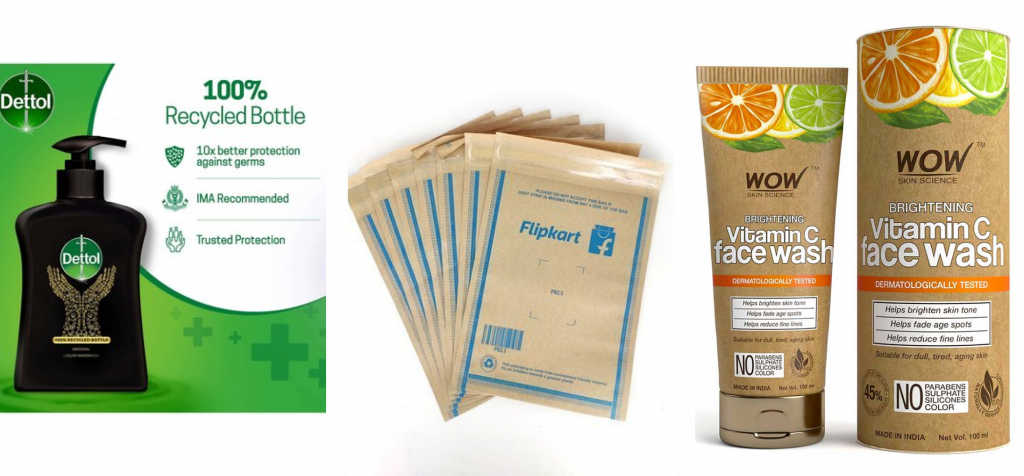Sustainability has been doing the rounds in marketing for quite some time now. Today, consumers expect the sustainability tag in every product they buy or consume. Brands are striving to feature environmental-friendly attributes to appeal to a growing audience who follow a sustainable lifestyle. From buying groceries to luxury fashion, every brand is put under the lens.
Is ‘sustainability’ going to be another passing trend or is it here to define every space?
The Pandemic was one for a surprise…or rather a shock. It brought the world to a standstill, pulling the legs of every consumerist ideology. On a different note, this also opened a lot of doors for improvement – of choices and perception.
With years of witnessing traditional advertising, one can surely tell that the world is now a more mature audience. Take a look at how brands are reacting to this change.
Evolution in advertising took a different spike in the last two decades due to the effects of the Pandemic. Consumers today, mostly millennials and Gen Z, are more conscious of what and where they spend their money. They do not want to settle for something just because it is colourful or fancy.
Most consumers seek a purpose behind each product to feel they are part of something big. They want to be responsible as a citizen and as a mindful human. All this was leading to the biggest trend wagon seen in years – Sustainability.
Of course, we have heard this term before. But never actually realised (stronger) that the world was changing rapidly. The masses, all of a sudden, had a lot of time to reflect on themselves and their lifestyle. This led the marketers to rethink and redefine their mission, vision, and motive to serve the new dynamics of their target audience.
What does it actually mean to be sustainable? Is it just green packaging and marketing bio-degradable products?
Well, no.
A complete sustainable brand will have ethical sourcing right from the grass-root level. The development stages of the products will follow environmental-friendly methods, valuing the zero-wastage policy. The materials would be unharming for the Earth and ensure their supply chains follow the same. Some brands even go to the extent of devising a circular economy.
An establishing brand may have the added advantage to execute sustainability much easier than brands already out in the market. This will also lead the customer base to considerably shift from the age-old brands to newer, responsible ones.
Existing brands realising the rising need to repurpose their stance on marketing have their baggage to look through. It wasn’t something that could be done overnight. The audience is now smarter than ever. Claiming sustainability and not living up to it would result in a backlash that most brands do not prepare for.
Some brands, understanding this possibility did test runs to evaluate their credentials. The simplest form of experimenting was through packaging. Brands like Dettol, Diageo, WOW Skin Science, Dabur, and Flipkart have come up with eco-friendly packaging options in recent times. A bunch of the biggie FMCG companies like HUL, Nestle India, Parle Agro, Coca-Cola, Pepsi-co, Marico, and Future Consumer have taken similar stances and pledged to completely settle for 100% recyclable packaging by the year 2050.

Hesitant to move towards sustainable packaging options? Then, we’re here to tell you that it’s the right time to shift. The small change can make a big impact on customers, who will be reassured that choosing the respective brand was indeed a good choice.
Consumers do not mind paying an additional amount if they believe the brand is true to its cause. A brand’s promise to do better, moving forward, is what they tend to pursue. So, when age-old trusted brands show they are trying to make a change for the sake of the consumers and the environment, the product then sells for itself.
Take luxury brand Vivienne Westwood for example. The brand’s campaign – Ecotricity urged contemporary luxury brands to adopt green energy instead of fossil fuels for their productions. Or the popular brand Gucci, which collaborates with sustainable organisations to come up with eco-friendly collections.
These brands do not take away their original motive of selling luxury premium fashion. Rather, they adopt new segments within the brand to satisfy a group of the audience, showing that they try to improve with time. Sometimes, that’s all you need to do.
Brands adopting sustainability practices (in one way or the other) are the ones that are going to stay longer in the market. A consumer’s lifestyle choices are backed up with reasonable awareness of brands and their effects. It’s the time of healthy transition and the brands that are smart enough to acknowledge this…stay!
As statistics go, the only future for brands is to ‘Invest in our planet’.